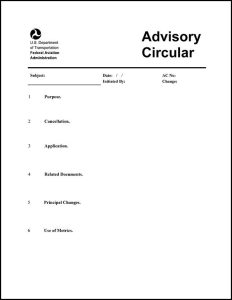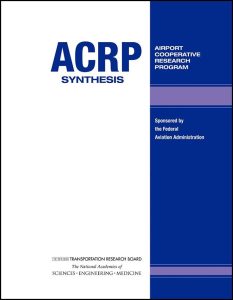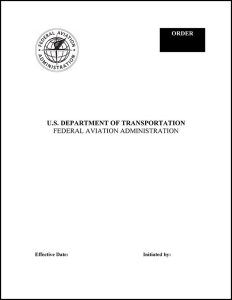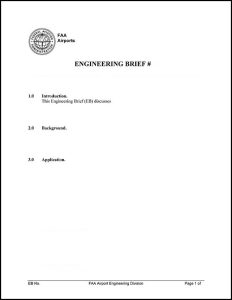To narrow the library of airside resources, use the filter boxes or airport map below or search box above.
Click an item below to expand.
Resources Matching Your Search
2013
This advisory circular (AC) recommends publications and administrative and operational procedures that will assist in the management of a non-federal ATCT (NFCT).
2008
ACRP Synthesis 12 examines factors affecting safe winter operations and the prevention of runway incursions by airport snow removal equipment operators.
2020
This advisory circular (AC) describes the standards and provides guidance in the development of a surface movement guidance and control system (SMGCS) plan for U.S. airports, in which scheduled air carriers are authorized to conduct operations when the visibility is less than 1,200 feet runway visual range (RVR). An SMGCS plan facilitates the safe movement of aircraft and vehicles on the airport by establishing more rigorous control procedures and requiring enhanced visual aids.
2008
Safety Advisor No. 2 addresses two kinds of airports: those with operating control towers and those without. When a part-time tower is closed, the airport is considered non-towered. Every year, there are more than 40 million arrivals and departures at FAA air traffic control (ATC)-towered airports. Nearly half of these are general aviation operations. Although it's possible for a pilot to avoid towered airports, doing so impacts the flexibility and utility of flying. Two things distinguish a towered airport. One is the presence of air traffic controllers, whose primary function is to coordinate traffic flow and prevent collisions. The second is that a pilot must maintain two-way radio contact with ATC and obtain clearances to land, taxi, and takeoff. Because ATC coordinates traffic at towered airports, pilots generally follow different procedures than at non-towered fields.
2018
Volume I of Annex 10 is a technical document that defines for international aircraft operations the systems necessary to provide radio navigation aids used by aircraft in all phases of flight. The standard and recommended practices and guidance material of this volume list essential parameter specifications for radio navigation aids, such as the global navigation satellite system (GNSS), instrument landing system (ILS), microwave landing system (MLS), very high frequency omnidirectional radio range (VOR), non-directional radio beacon (NDB), and distance measuring equipment (DME). The information contained in this volume includes aspects of power requirements, frequency, modulation, signal characteristics, and monitoring needed to ensure that suitably equipped aircraft will be able to receive navigation signals in all parts of the world with the requisite degree of reliability. This document is available for purchase from ICAO for $520.
ACRP Synthesis 26: Current Airport Inspection Practices Regarding FOD (Foreign Object Debris/Damage)
2011
ACRP Synthesis 26 details the components of a comprehensive foreign object debris/damage (FOD) management program and compiles current practices, techniques, and tools available for use by airports for FOD inspections.
2018
This order provides guidance to all personnel in the administration of the Flight Procedures and Airspace Program. It defines responsibilities regarding terminal instrument procedure development and maintenance service provided by the FAA for the U.S. Air Force (USAF) at domestic civil airports.
2015
TRB conducted a webinar that featured research conducted by ACRP on business planning for disruptive or irregular airport operations. Webinar presenters described best practices and practical applications in adopting a plan for sustained operational resiliency in the face of disruptions. Ways to evaluate and measure the effectiveness of such a plan were also discussed.
2013
ACRP Synthesis 49 highlights comprehensive safety and security training resources as well as successful practices for new maintenance hires at general aviation airports. The objectives are to locate information on training new hires, identify current practices and challenges, document core training elements and resources, and identify resources that may help raise knowledge and understanding on the airport campus and its operating environment.
2016
This advisory circular (AC) provides guidance on the development, installation, testing, approval, and maintenance of Automatic Dependent Surveillance-Broadcast (ADS-B) Out squitter units for airport ground vehicles. Using this AC, airports will be able to acquire approved and authorized airport ground vehicle ADS-B squitter units that are compliant with Title 14 Code of Federal Regulations (CFR), Part 91, Automatic Dependent Surveillance-Broadcast (ADS-B) Out Performance Requirements to Support Air Traffic Control (ATC) Service, as well as the initial set of ADS-B applications. Please note that the technical specifications for manufacturing ADS-B squitter units for airport ground vehicles are published in the FAA's document, FAA-E-3032, Vehicle Automatic Dependent Surveillance Broadcast (ADS-B) Specification, published January 7, 2015.
2019
The FAA developed this advisory circular (AC) to provide general information and guidance for commercial and general aviation (GA) operators planning flights in oceanic and remote continental airspace. This guidance includes the authorizations needed for operations in such airspace outside the continental United States (CONUS). Change 1: This change aligns this AC with the Future of Flight Standards reorganization. This change also adds standard information in Chapter 1 and updates references, hyperlinks, and formatting throughout the AC.
2016
Engineering Brief (EB) 97 provides installation guidance and technical information to airport operators, Airport District Offices (ADOs), and architectural and engineering (A&E) companies about the use of AeroMACS technology for communication and control purposes related to the safety and regularity of flight on the airport surface. Note, this EB is applicable only for the non-federal AeroMACS field trial project. A revised EB, updated with the lessons learned from the field trials, will be issued in the future that will be applicable to the AeroMACS projects at other airports.






